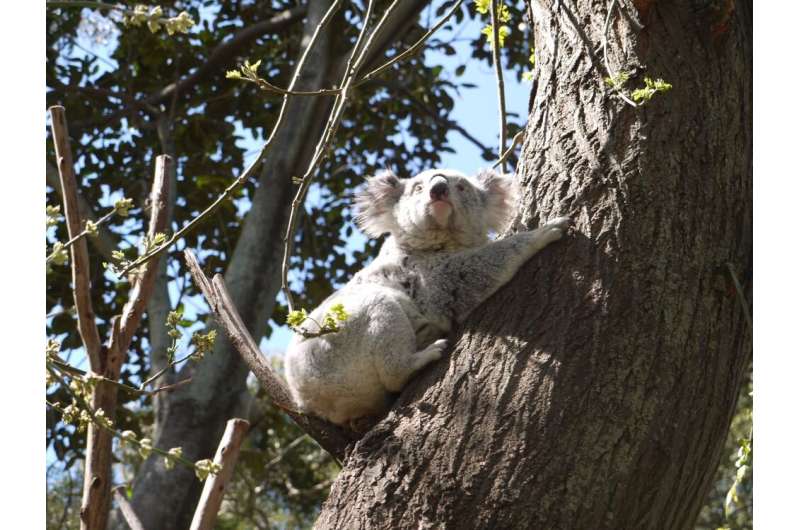Understanding long-term trends of stressors on koala populations

Analysis of three decades of koala rescue data provides new insights into long-term patterns of stressors that impact koala populations in the Australian state of New South Wales. Renae Charalambous and Edward Narayan of Western Sydney University and The University of Queensland present these findings in the open-access journal PLOS ONE on October 28.
Koala populations are declining across Australia, and the species is vulnerable to extinction. This decline has been linked to bushfires and habitat disturbance caused by human activities, such as land clearing for development. However, long-term trends of such stressors and their impact have been unclear.
To better understand these long-term patterns, Charalambous and Narayan analyzed data from three wildlife rescue groups in New South Wales. The data cover a period from 1989 through 2018 and include 12,543 koala sightings and instances in which a koala was admitted for clinical care.
Analysis of the data revealed that the most common reason a koala was recorded as a sighting or admitted for clinical care was disease—most often signs of chlamydia. Most koalas that were sighted or admitted for clinical care were released. Incidents of disease increased over the course of the study period, while incidents of release dropped and incidents of euthanasia rose. The regional area with the highest number of koalas found was Lismore, which has a high level of human population growth associated with deforestation of koala habitat.
The researchers conclude that their data indicates a significant impact of human population growth on koala populations through a variety of stressors, including habitat disturbance, vehicle collisions, and dog attacks. Furthermore, stress to the koala immune system resulting from bushfires and human disturbance of koala habitat may explain the prevalence of disease. Creation of sustainable connectivity between land use for agriculture and native wildlife conservation is of paramount importance at the local and national level.
These findings could help inform efforts to address koala population decline through such actions as bushfire control, sustainable agricultural practices, environmental planning, and governmental policy.
The authors add: "Australia's national wildlife icon, the Koala currently faces the brink of extinction crisis due to environmental trauma and diseases. We present decadal periods of evidence of significant stress and mortality risks of wild koala populations across the major hotspots in South-eastern Australia."
More information: Charalambous R, Narayan E (2020) A 29-year retrospective analysis of koala rescues in New South Wales, Australia. PLoS ONE 15(10): e0239182. doi.org/10.1371/journal.pone.0239182
Journal information: PLoS ONE
Provided by Public Library of Science


















